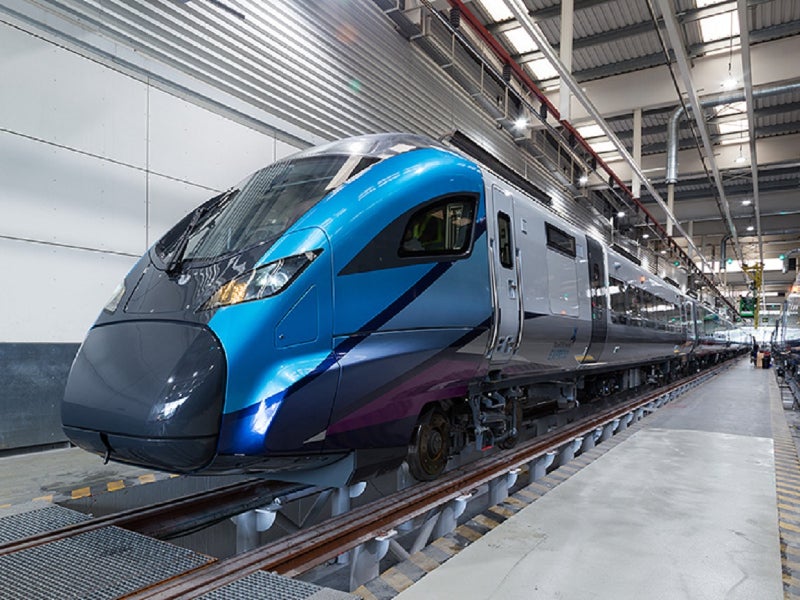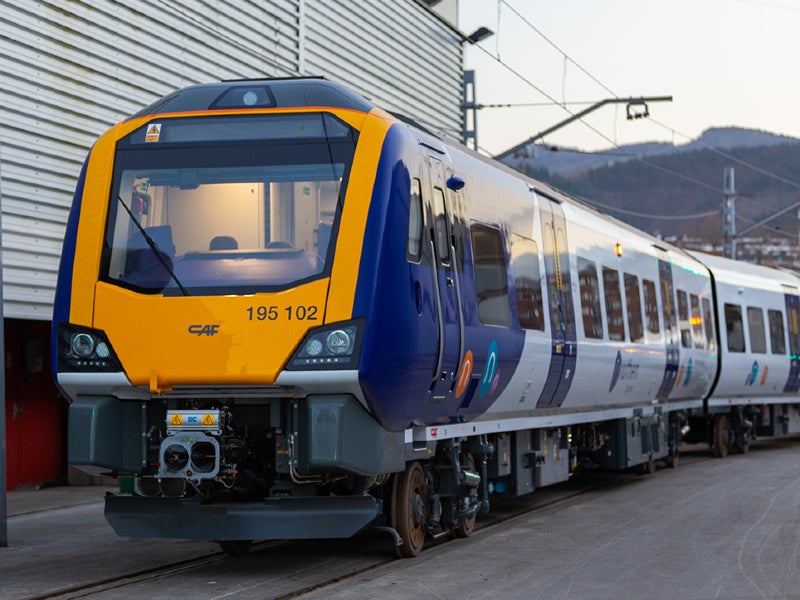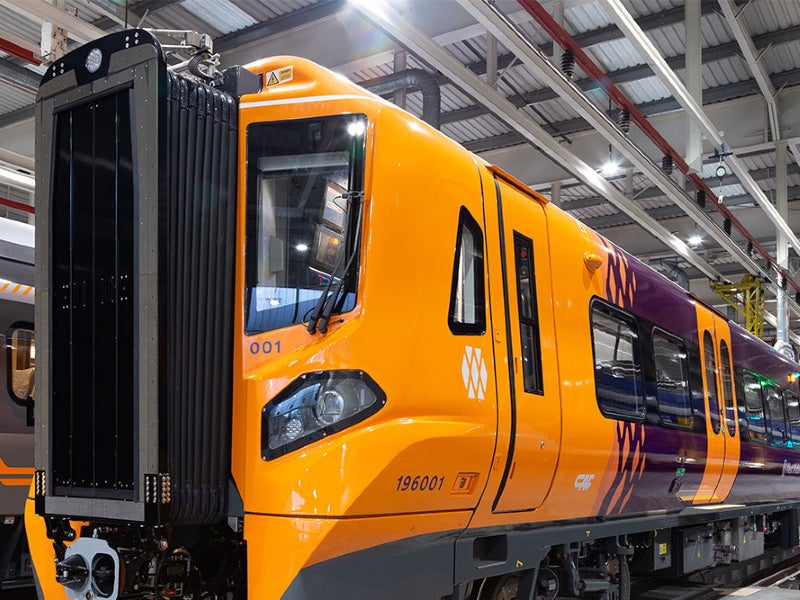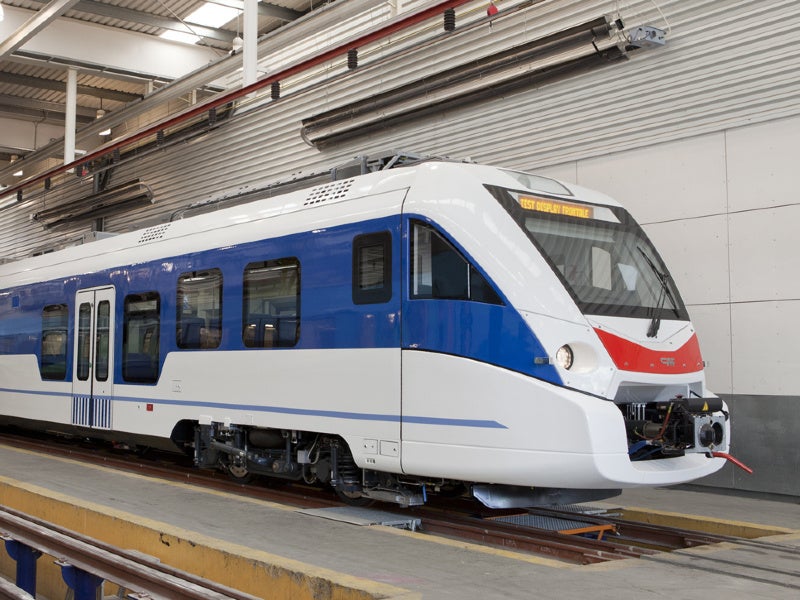Civity is a fleet of modular, low-floor trains, manufactured by Construcciones y Auxiliar de Ferrocarriles (CAF), a Spanish rail manufacturer, to meet regional and commuter transport requirements.
The Civity family is designed to specifically meet the infrastructure requirements of the country to which they are supplied.
Specifications of Civity trains
Civity trains are available in various types of traction including electric multiple unit (EMU), diesel-mechanical or diesel-hydraulic multiple unit (DMU), diesel-electric multiple unit (DEMU), bi-mode multiple unit (BMU), and battery-electric multiple unit (BEMU).
The trains can be equipped with batteries which can power the train in case of a limitation in catenary power. They can also be charged using the energy generated from braking. The battery systems are modular and can be configured based on requirements.
Civity trains can attain a maximum speed of 160km/h which can be scaled up to 200km/h, depending upon the operator’s requirements. The train has a minimum of four motors, with a maximum power output of up to 4,400kW at wheel-rim.
The maximum service brake deceleration and maximum emergency brake deceleration are adjustable to 1.1m/s².
The train can run on supply voltages of 1,500VDC, 3,000VDC, 15kV AC, and 25kV AC. It can also run on the combination voltages in bi-tension and tri-tension trains.
Variants of Civity trains
Civity trains are designed to handle high passenger capacities. The standard version of a Civity train uses an international gauge of 1,435mm while there is another Civity version that can run on a Russian gauge of 1,524mm, making it suitable for Baltic nations as well.
The Civity UK variant was manufactured to cater to the unique needs of the UK railway market, where the same user comfort can be experienced across all railway operators.
The Civity XL variant comes with extended modules for enhanced passenger carrying capacity. The optimisation of energy consumption per passenger makes this variant energy efficient. Higher passenger capacity can be achieved with the Civity Max variant, in which each car has two bogies underneath to support the additional passengers and the train load.
Civity Duo is a double deck model that offers two floors, with greater seating capacity. The variant comes in a 2+2 or 2+3 seat configuration, increasing passenger capacity while driving more profits for the operator.
Based on the standard Civity version, Civity Nordic variant is designed to operate in extreme temperatures. It can withstand extreme weather conditions between -40ºC and +40ºC.
Design and features of Civity Train
Civity train’s floor height can either be 600mm or 800mm. The low floor allows the train to be easily accessed from most platforms in Europe. The height of the train can also be customised based on client requirements in some cases.
The modular nature of the train allows the railway operators to adjust the configuration of the train between two and eight cars by adding or removing intermediate cars, depending on passenger demand.
The trains can be configured with seats or standing areas, luggage racks, bicycle storage, vending machines, areas for children, custom-made zones especially for business class, and more. Folding tables, sockets, and free-WiFi are also available on the train. The number of doors on the cars can be configured to one or two or more doors on each side.
Civity trains fully comply with people with reduced mobility (PRM) technical specifications for interoperability (TSIs), bringing the best accessibility options to passengers, especially for those travelling in wheelchairs and passengers with visual or hearing impairments. The central area of the car can be configured for wheelchairs and toilets are adapted for wheelchair users.
The train can be fitted with different types of boarding facilities such as a gap covering step, a low step, a wheelchair ramp, and a wheelchair lift.
Orders and deliveries of Civity train
The New South Wales (NSW) government contracted the Momentum Trains consortium to supply a fleet of new regional trains in February 2019.
Momentum Trains consortium is an international consortium comprising CAF, UGL Rail Services, Pacific Partnerships, CAF Investment Projects, and DIF Infrastructure V Coöperatief.
The Civity fleet will replace the ageing NSW regional rail fleet of XPT, XPLORER, and Endeavour trains running across NSW and between Sydney, Canberra, Melbourne, and Brisbane.
CAF also received a supply and a long-term maintenance contract from two German regional transport companies, Verkehrsverbund Rhein-Ruhr (VRR) and Nahverkehr Westfalen-Lippe (NWL), for 63 battery-electric variants of Civity in June 2021. The trains will be delivered in two passenger capacities of 120 and 160 seats.
The trains will run on several lines of the Niederrhein-Münsterland network in Germany.
AB Transitio, a Swedish train operator, awarded a €250m ($297.5m) contract to CAF to supply 20 EMUs with four cars each, and eight BMUs consisting of three cars plus a power car, based on Civity Nordic platform, in April 2021.
The trains are intended to run in four regions of Sweden, specifically in Jönköping County, Kalmar County, Kronoberg, and Blekinge.
Swedish state-owned operator SJ AB placed an order to supply 25 regional CAF Civity Nordic platform units, worth approximately €300m ($305.4m), with an option to extend the contract to up to 60 units in July 2022. The first train is expected to enter service in 2026.











